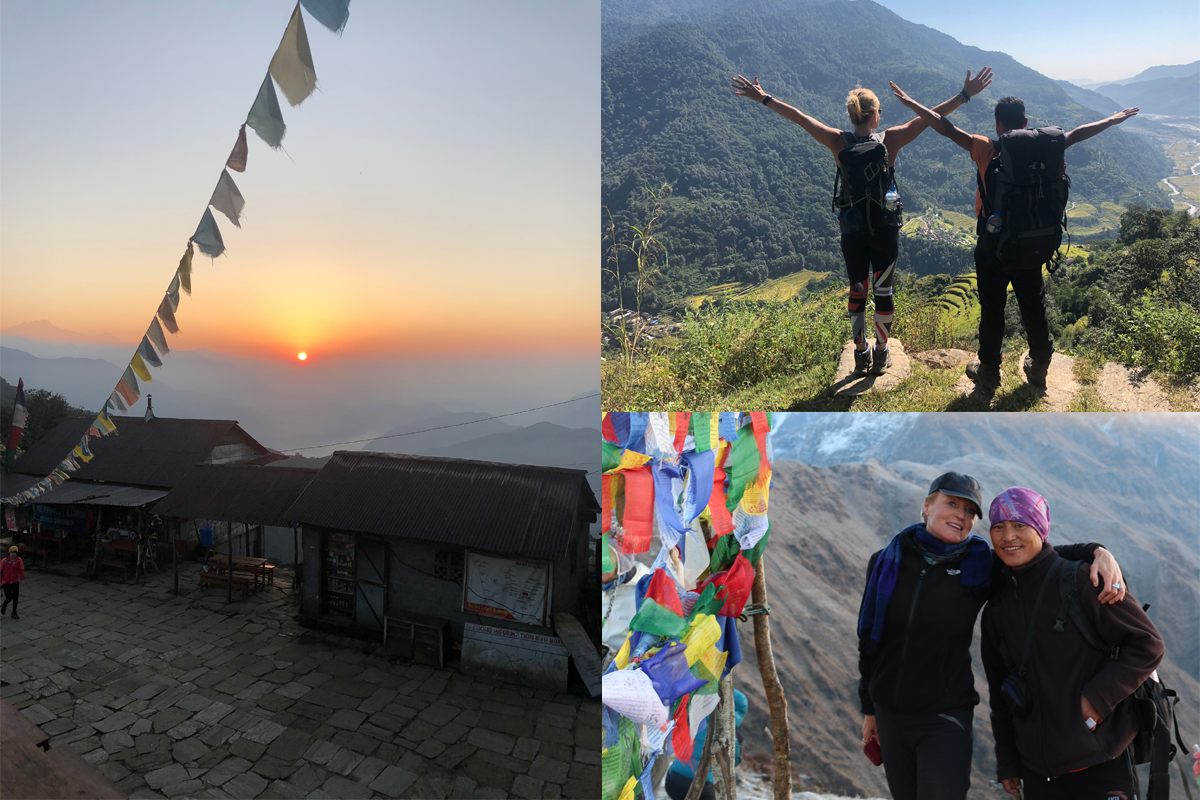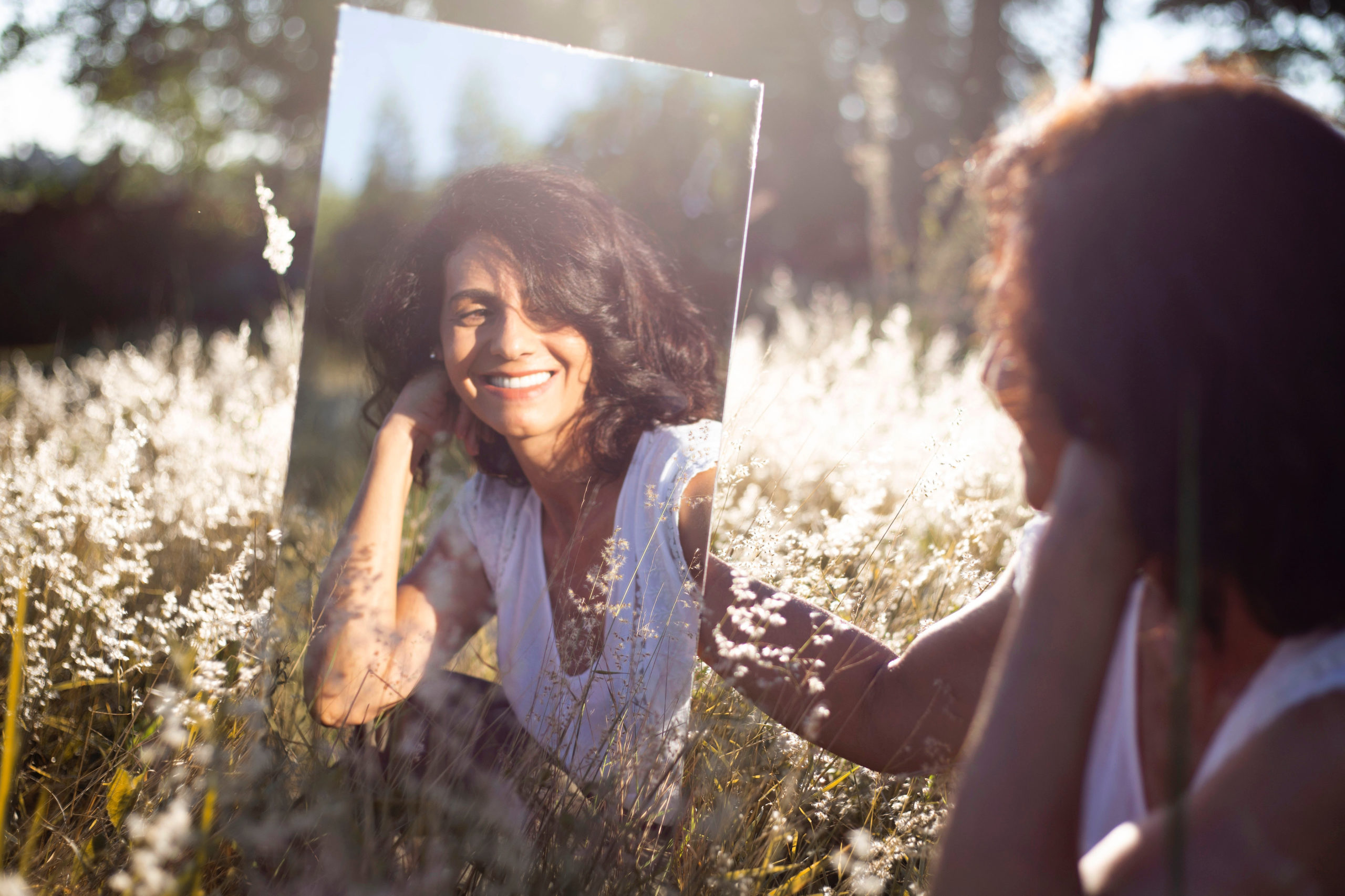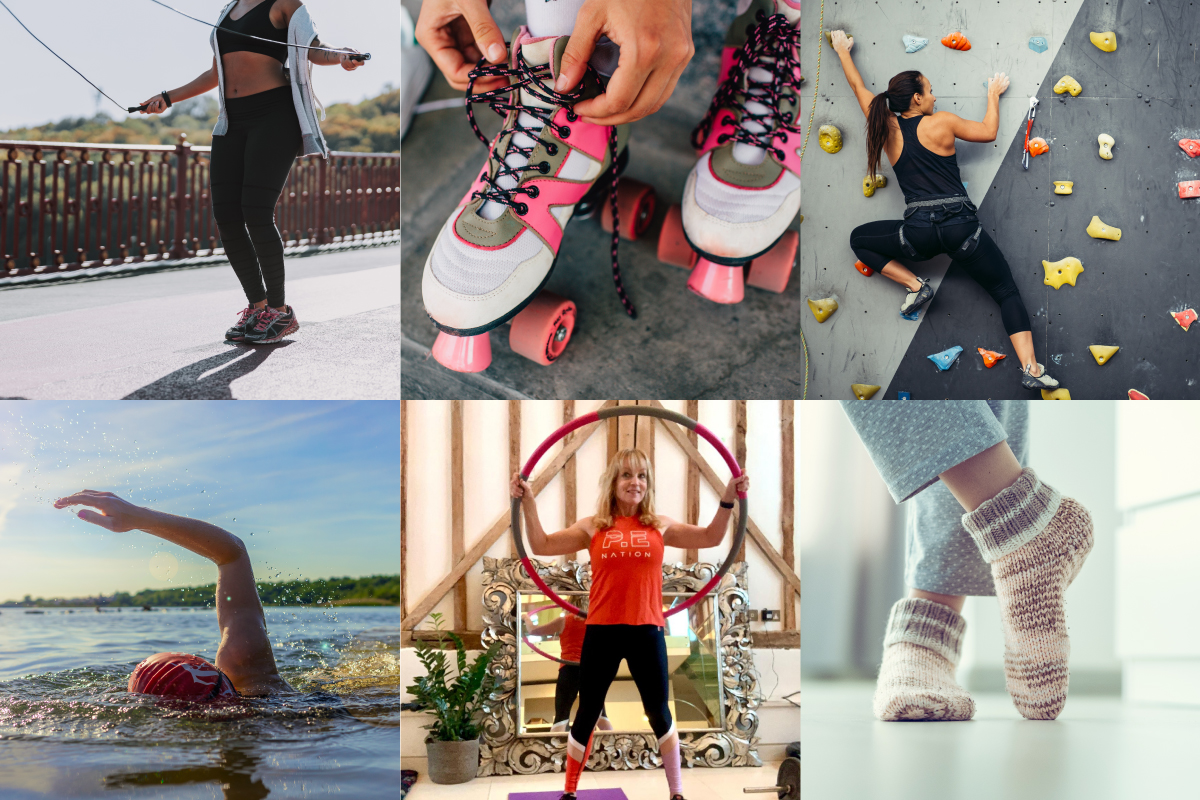Growing up in the Lancashire in the 70s and 80s, going off backpacking for a gap year was not something I had even heard of. Roll the clock forward a few decades and I heard all the crazy tales of backpacking in Bali, Cambodia and around the world when my daughters have been travelling (amidst the pleas for extra money from the bank of mum!)
So, in an impulsive moment at the beginning of 2018, I decided to embark on my first backpack adventure age 54 and booked yoga trekking trip to Nepal with my youngest daughter. Maybe it had the hints of a midlife crisis and was sparked by a desire to make the most of every moment with my daughter before she flew the nest for university. I also wanted a new challenge, to do something different having realised I had spent the last 10 years going to Majorca every summer.
This trip evoked a new sense of excitement and freedom. Even the thought of packing gave me a buzz, although I really was naïve about what the accommodation was going to entail and never thought about how primitive the sanitation was going to be.
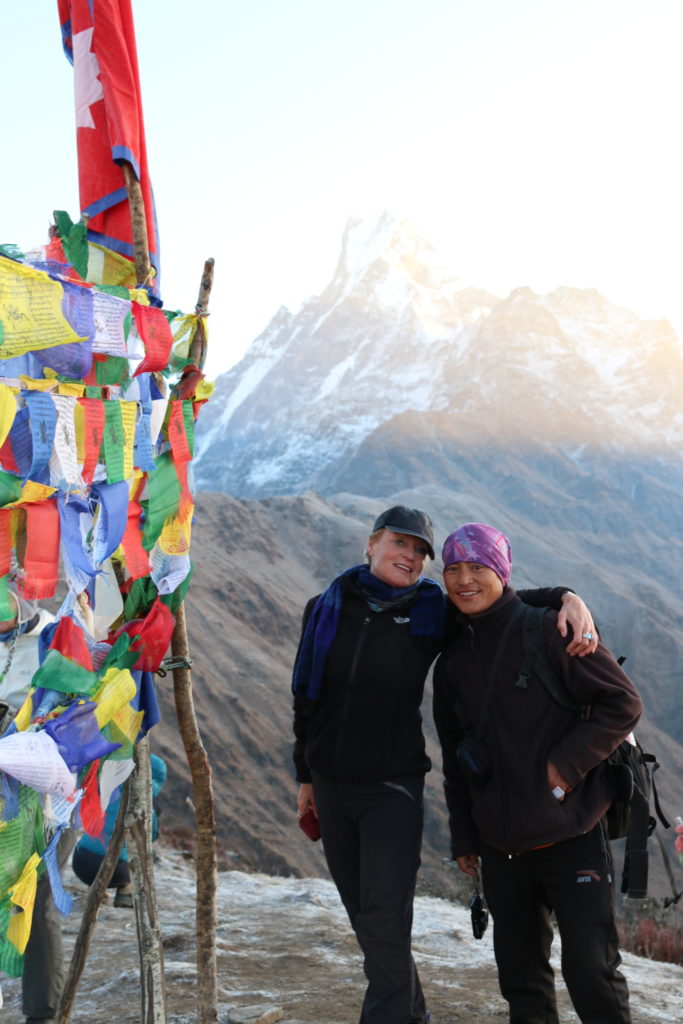
My Mardi Himal Trek
So, I booked the flights to Kathmandu to trek some of the highest mountains in the world. That was the easy bit. 9 days climbing to 4500m (14,763 ft) to Mardi Himal surrounded snow covered mountain tops, snow leopards and yaks was the glamorous vision. I choose this new route, which opened in 2012, as it was unspoilt, less busy and less commercialised and expensive than other treks to Everest base camp.
The trek took us along the ridge or the sacred Machapuchare Fishtail, through forests and rugged mountain faces with some spectacular views. We rose early to watch the best sunrises and sat wrapped in our sleeping bags to watch the early sunsets light up the mountains orange.
By challenging myself to do something different I was surprised how clearly it re-affirmed what was important to me. It was refreshing to be free, not to worry about money or what I was wearing and being close to nature. Feeling the earth so close made for a much clearer the mind.
I really connected with nature and myself. I realised that it’s not cars, clothes and cosmetics that make me happy – the physical and spiritual experience was deeper than anything I had experienced before. And there is something kind of nice about snuggling up with 5 others in a sub-zero room in sleeping bags and laughing about how many days you have slept in the same clothes.
The truth is the most worrying part for me was the panic before the trip. I didn’t know what to expect and all the lists I searched for online where so long and vague. Now I feel ready to pack a backpack and conquer any travel adventure, here are my tips for planning and packing for a trip of a lifetime.
Arranging your trip.
When backpacking there are many options. You can go it alone, book an independent guide or book a packaged trek. As this was my first time I opted for an organised yoga trek – which included guides, porters, passes, accommodation organisation, transport, food and passes – with www.nepalyogatrek.com and www.purnayoga.com.np who where fantastic! There are pros and cons to this. I loved the fact I could relax and did not have to worry about finding a bed at night on the mountain – as places in the tea houses are limited. At times, however, I felt I could have trekked more each day and gone faster. But reflecting part of the joy is the slow and steady cleansing experience.
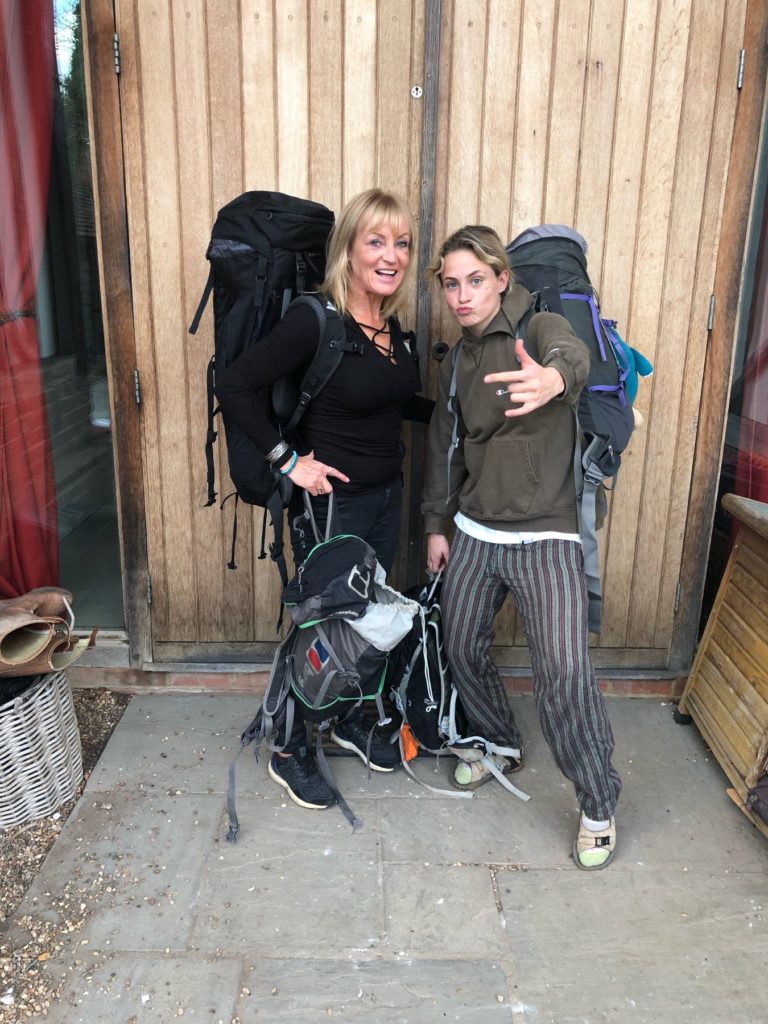
There are different types of packages and treks to suit your budget, some include everything while others with a lower price may not include food or as much support. You can always arrange an independent guide, in Kathmandu or Pokhara when you get there. This is cheaper, but they may not arrange accommodation which is cheap (only £3-5 a night on the mountain) but limited.
Going it alone felt too risky for me. I would have been nervous about getting lost and stressed having to organise everything – especially when the packages are such good value. But lots of couples/groups do trek independently, saving a lot of money and going at their own pace.
Best time of year in Nepal
Every destination has peak seasons for a reason. In Nepal, the visibility and weather are best in March- April and end of September to November. It starts getting cold towards the end of November to February and many of the treks close due to snow. And unless you like getting wet, avoid June to mid-September as this is very wet with lots of leeches and downpours. Book rooms in advance especially if going to the most popular travel destinations, like Everest
Get Trekking Fit
Trekking in Nepal usually involves trekking 4-6 hours a day over 5 plus days. You can choose a trek to suit you, going for a slower trek that covers about 10km a day or an advanced one covering 20km plus. It is a good idea to have a basic level of fitness, so make sure you can walk over rocky terrain. Being fit reduces the aches and pains induced with continuous exercise. Three months prior to my trip I ensured I did 10k steps a day and increased this to 15k/20k steps at the weekend. I also did lots of squats and leg strengthening exercises so that my knees and glutes would be ready.
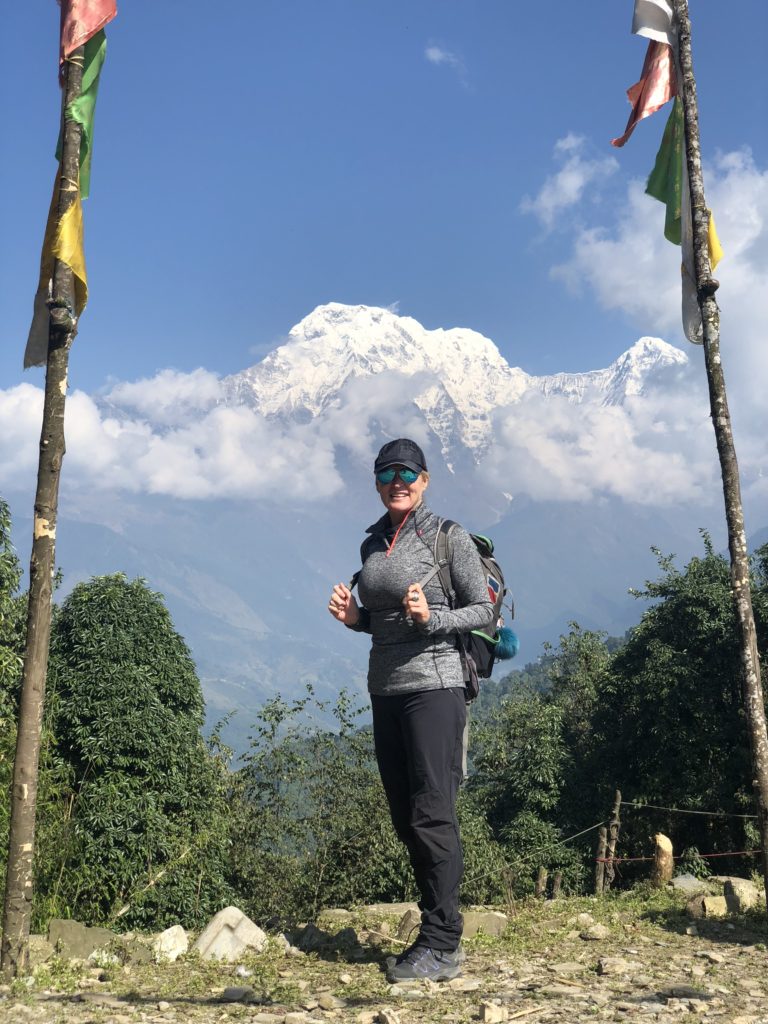
What To Pack
The first thing you need is a large rucksack. The best ones are light weight and with lots of pockets to access to items on the move. Do not be tempted to take too much. If you are going alone remember you will have to carry it and if you’re on a package trek they will limit what they will carry for you to about a mid-sized sack. The best approach is to think light layers of clothes in fabrics that dry quickly.
A good quality sleeping bag – 10 /20 as it gets cold
A pair of worn in hiking boots
3 pairs of walking socks
Gloves and hat/cap
3 long sleeve warm top
3 base layer t shirts
A lightweight waterproof jacket
3 trekking trousers, the ones that zip off to make shorts are great
Sunglasses
Water Bottle
Quick drying towel
A pair of earplugs, a travel pillow and blanket for a good nights sleep!
Stay Medicated
Make sure you take any personal medication with you. For me, that included HRT and vitamins and headache tablets were useful for when I got up high. I made sure I had a mini first aid kit of essentials.
Water, Sanitation and Hygiene
Drinking lots of bottled water is key to feeling well at high altitudes, I was drinking 3-4 litres a day, which you can buy at the tea houses on the mountain and carry with you in the backpack. A water bladder is also a good idea, so you can drink on the move .
The sanitation was a bit of a shock, so pack anti-bacterial gel, wipes and toilet roll. Some of the higher camps have no showers so I found dry shower gel really cleansing.
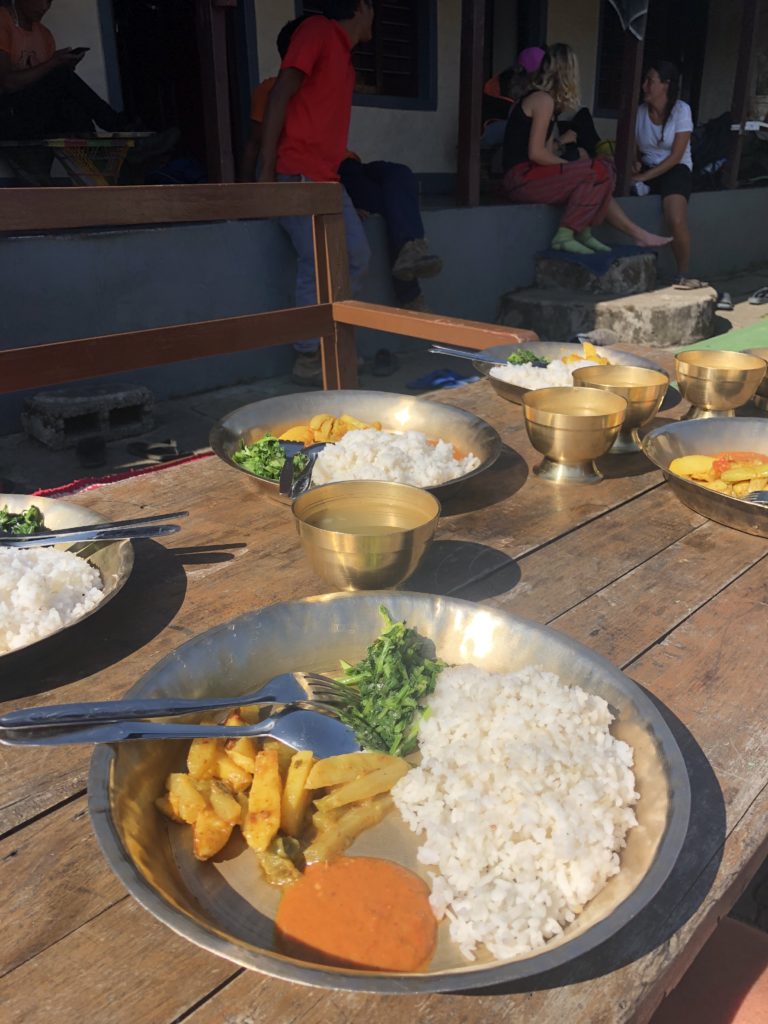
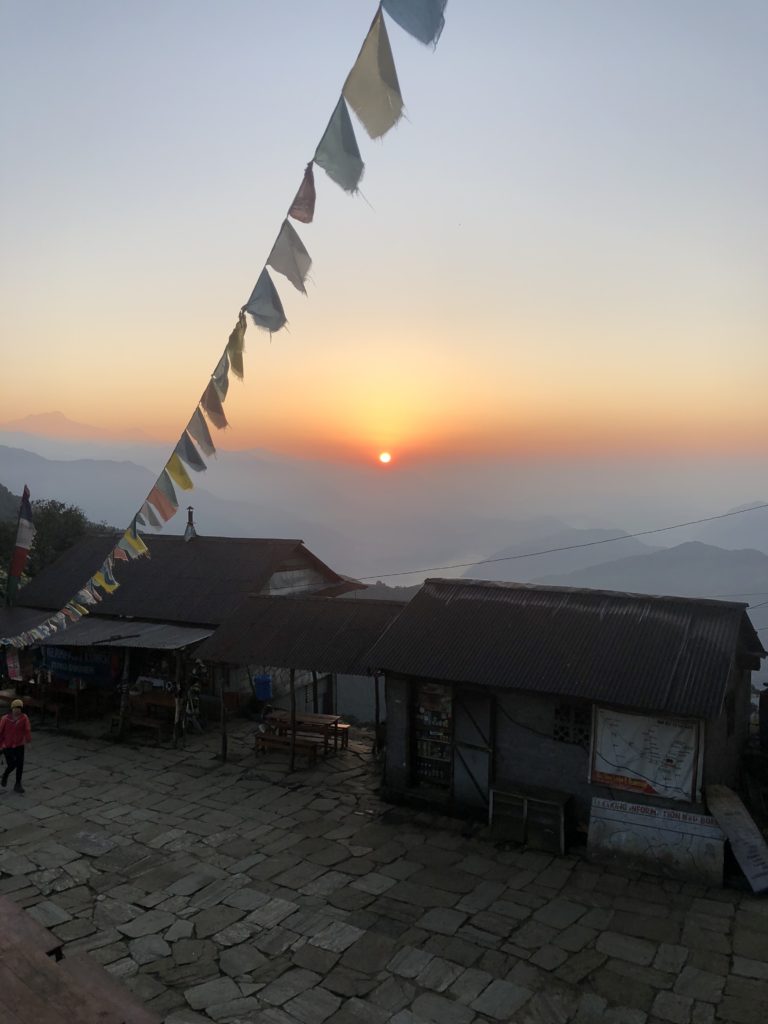
Embrace The Digital Detox
On some of the less commercial treks like I was on you will not get any signal. The power supply at the tea houses is also too low to recharge an iPhone. A solar power pack is really useful if you what to use your phone for photos and video. I used this one.
Embrace Local Culture
The food is fresh local and cheap – lots Dahl curries, and surprisingly also English food on the mountain. Make sure you pack protein bars and snacks nuts to eat on the trek.
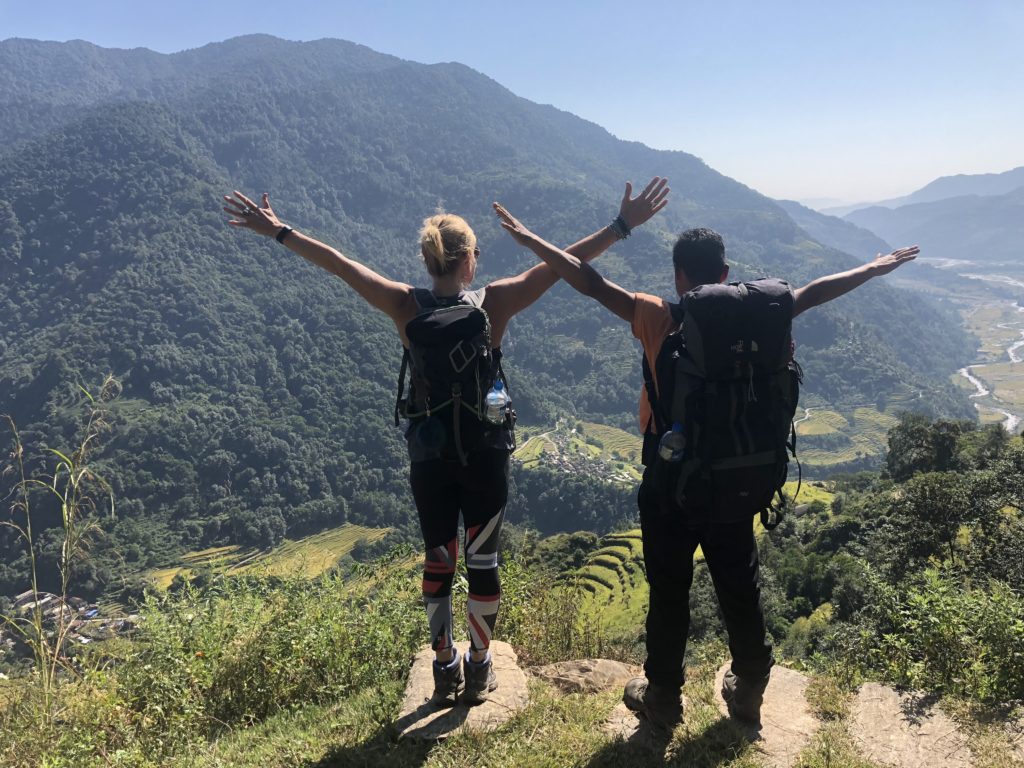
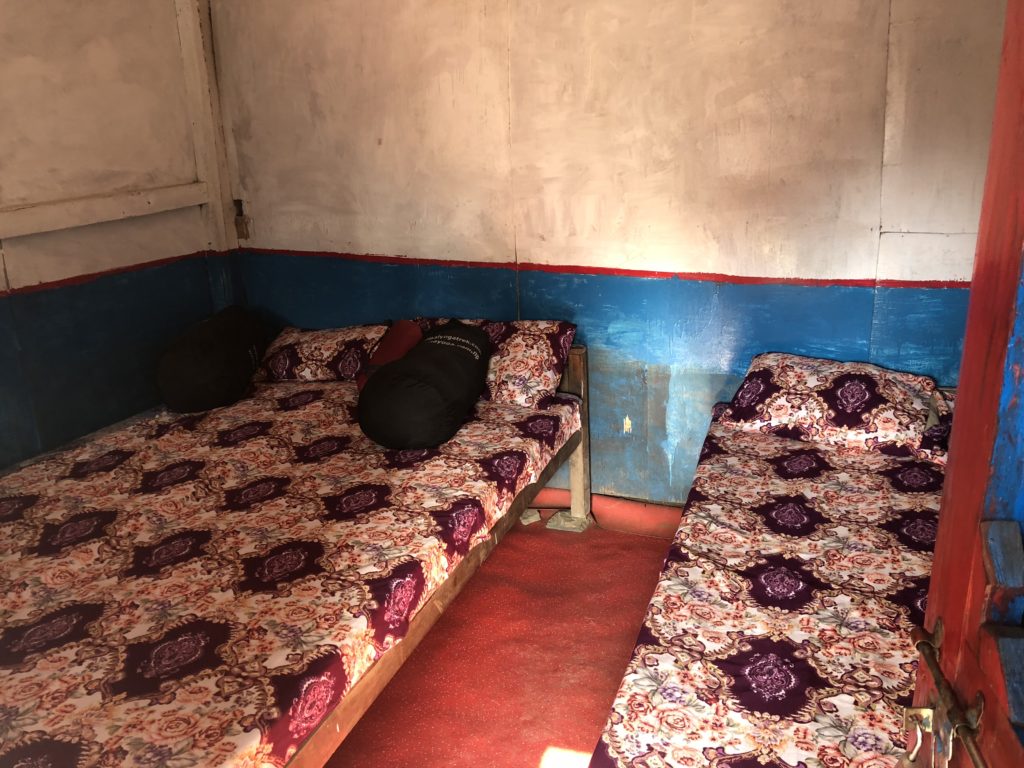
Budgeting For Your Trek
Nepal attracts lots of travellers as it offers great value in an amazing country. Costs vary depending on where you go, from budget to luxury, but here are some of the cost examples to consider:
Nepal Visa. You will need to get an entry visa before you go or at the airport. These start from about £20 for 15 days
Trekking permit/Tourist Information Management System. You will need these permits to trek at around £15 and £10 each but when on a package tour they organise them for you.
Package treks. 5-10 days these vary but the start about £700 pp, which includes guide, accommodation, food and permits, but doesn’t include drinks.
Personal Guide. Again, these vary but start at about £20-40 a day. Porters are less than this.
Food and Drink. The cost of water goes up as you get higher on the mountain but varies from 30p to £1. Meals start at about 60p a meal, and if you order the local dish Dal Bhat this includes second helpings!
Travel Insurance – It is advised but many standard insurance companies will not cover you going to this height –this the best company I found for insurance.
Accommodation. Starts from about £3 a night for a shared mattress in a very basic hostel type room.
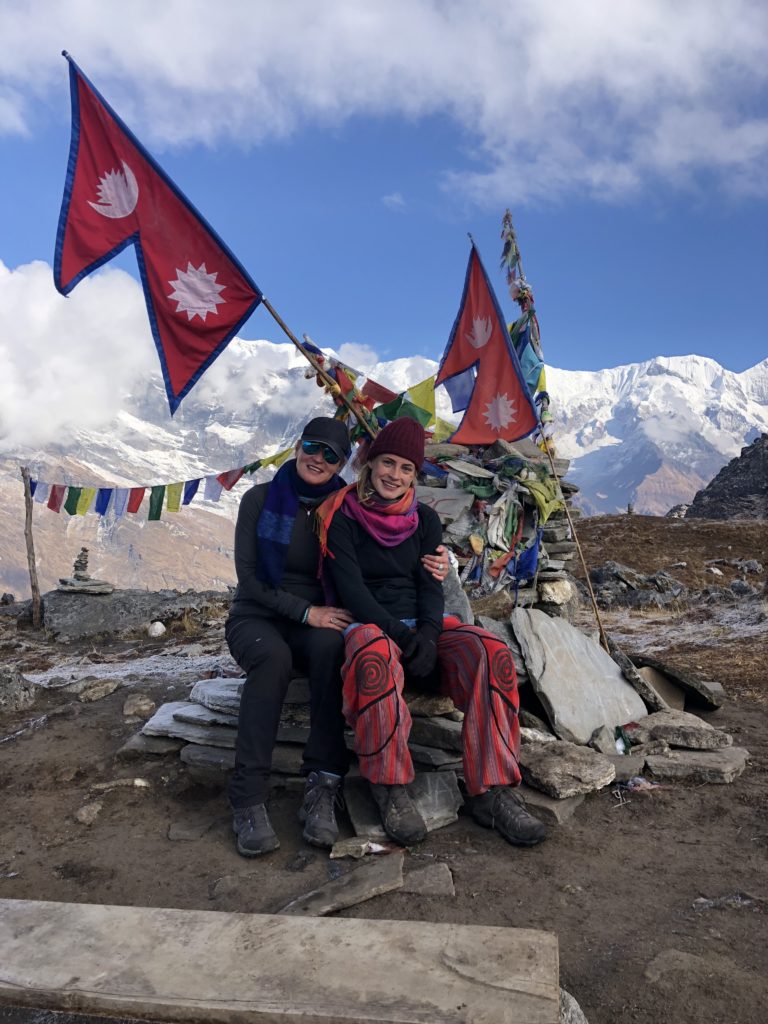
Trekking through lush green forests, eating boiled eggs for breakfast at base camp, bumping into yaks on the rocky hillsides, not showering for days and sleeping bag sub-zero sleepovers – These are experiences I will never forget. Mardi Himal is a beautifully unspoilt trek which I would do again. Yes, it takes a lot more planning and energy than going on a standard holiday – but give me a backpack any day over a sunbed.
Happy trekking!
Useful links
https://uk.nepalembassy.gov.np/visa/
https://www.thelongestwayhome.com/travel-resources/trekking/mardi-himal-trek.html
